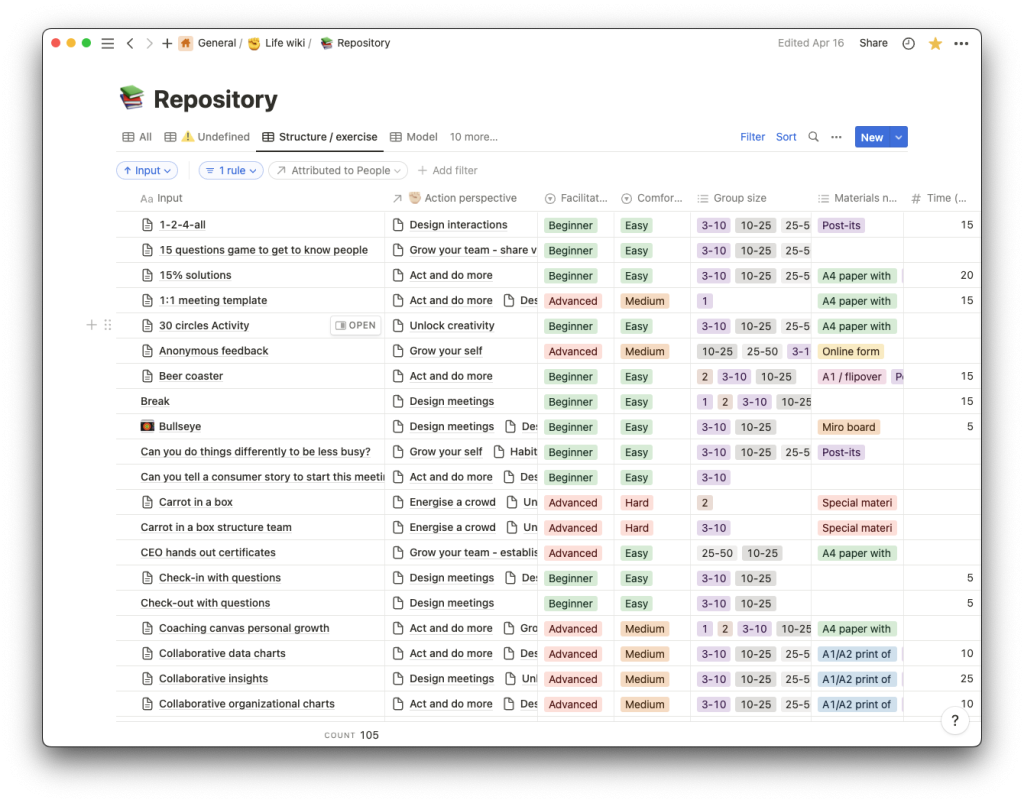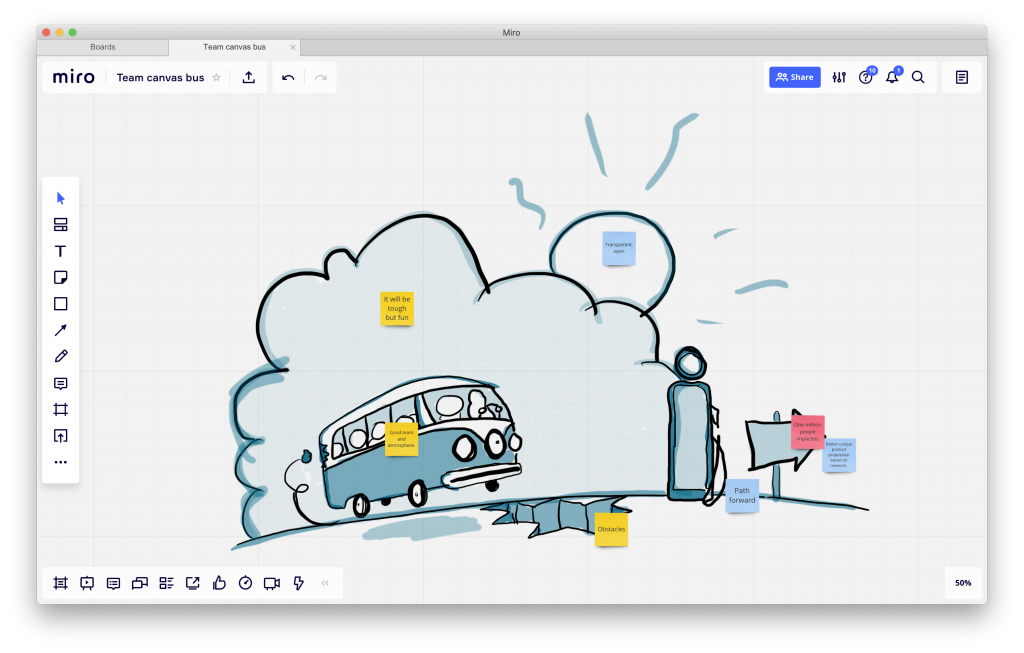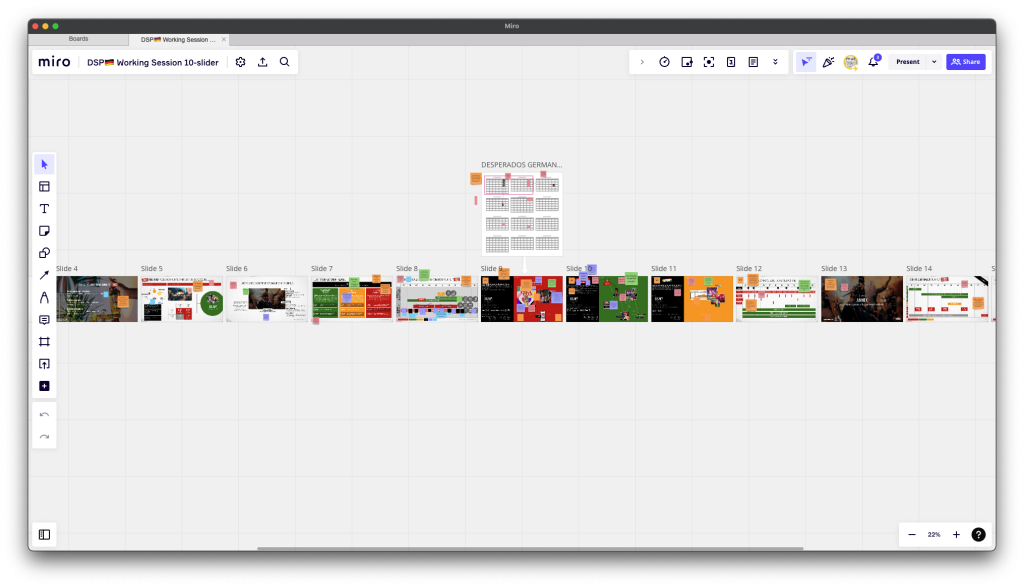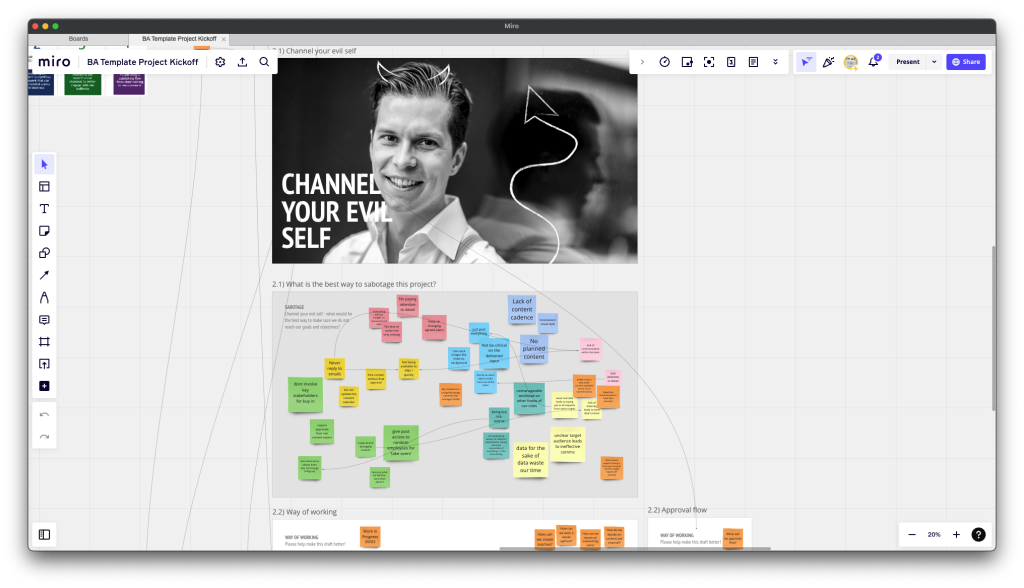My personal toolbox of frameworks, models, exercises, and structures I collected over the years.

It is tempting, if the only tool you have is a hammer, to treat everything as if it were a nail. To avoid that trap, I continuously try to expand my personal toolbox of exercises, models, frameworks, and structures.
Over the years, I have been lucky enough to learn from a wide variety of great strategists, clients, and the community of facilitators around IDEO, Hyper Island, and Liberating Structures.
I have collected the frameworks and exercises that I have appreciated the most into a Notion-based repository and categorized them based on purpose, ease of use, comfort level group size, what materials are needed, time spent, and origin/source.
Want to access the toolbox? Contact me.

How I use my toolbox for strategy, storytelling and ways of working.
Having a repository of frameworks, models, exercises, and structures helps focus on the right things. Rather than spending a lot of time looking for or thinking of new ways to engage our team or communicate our message, we’re able to select the best ways to achieve our goals.
Example: Presentation Gallery Walk
One of my favorite exercises, inspired by Liberating Structures, is the Presentation Gallery Walk. It allows a large group of stakeholders to collectively review and improve a storyline and can be done both digitally and physically.
Rather than sequentially click through a Powerpoint presentation, participants are invited to walk past the printed storyline, as if they were visiting an art gallery. They can leave their feedback on post-its on the corresponding slides.
By doing this, participants are able to oversee the full presentation and asses whether too little or too much time is spent on specific parts of the presentation. Additionally, by using the post-its with comments as a “heat map”, it is easy to see what parts of the presentation don’t need to be discussed (as they don’t have any comments) and which parts are fit to be discussed with the whole group.
This helps radically shorten review rounds and has the group focus on the elements that need attention, rather than every single slide.


Example: Sabotage exercise
Another exercise I love is the ‘sabotaging’ exercise. It starts from the fact that at the end of the Second World War, the Allied forces sent a manual to occupied Europe to help the resistance sabotage the occupiers. The Simple Sabotage Field Manual, declassified in 2008 and available on the CIA’s website, provided instructions for how everyday people could help the Allies weaken their country by reducing production in factories, offices, and transportation lines. As the CIA now states on their website “Some of the instructions seem outdated; others remain surprisingly relevant” and “Together they are a reminder of how easily productivity and order can be undermined”.
I use the story as the basis for an exercise in which attendees are invited to sabotage either their team, their ambition, their organization, or even their customers. The outcomes of the exercise make an “avoid list”, the kind of behavior you tend to want to avoid because it is destructive behavior.
On the other hand, the reverse/invert of the outcomes are usually the things you want to strive towards as a team.
The exercise enables a more creative way to spot key issues in a way of working, a team or organization, without forcing people to point out specific teams, people, or parts of the organization.


